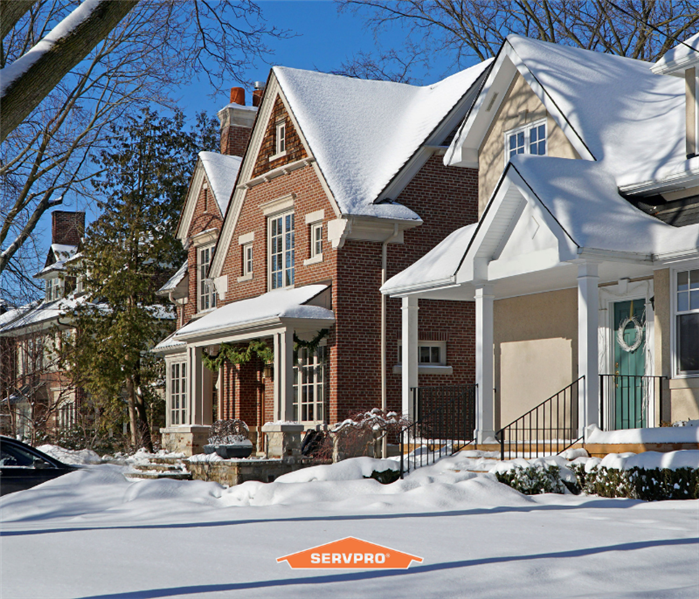Winterizing Your Home: 2020 Complete Checklist
11/9/2020 (Permalink)
 New England winters can be unforgiving - Winterize your home to be prepared for whatever the season throws your way!
New England winters can be unforgiving - Winterize your home to be prepared for whatever the season throws your way!
As the winter months come around the corner, it's time to think about how to winterize your home to save money on your energy bill and prevent any winter-related disasters. Winterizing is generally inexpensive and can be completed within a weekend without any professional help with a big payoff in the end. Follow these 20 tips for winterizing your home to enjoy a warm, cozy home all winter long.
Winterizing Your Home Checklist
- Clean out gutters and downspouts of any debris, leaves, or branches.
- Buy a snow shovel and ice melt so you're ready for the first snow or ice storm before it hits.
- Bring all of your outdoor furniture inside your shed, garage, or basement.
- Seal cracks and other openings around windows and doors to help prevent cold air from entering.
- Purchase and install door draft stoppers for all exterior, basement, and attic doors to keep heat in your living spaces.
- Set ceiling fans to turn clockwise so that they push hot air from the ceiling down to the floor.
- Put out area rugs or carpets to keep floors warm.
- Replace filters in your furnace and HVAC system to improve energy efficiency and keep up air quality.
- Prevent water pipes from freezing or bursting: Insulate any pipes that run along outer walls or are in non-heated areas like attics or garages.
- Winterize your hose: Fully drain the hose and the source pipe, bring the hose inside, and shut off the water to the hose valve to prevent any freezing or bursting.
- Seal windows to prevent cold air drafts: This can be done by putting up window insulation film (which doesn't look great - but will save you money) or by using weatherstrip tape to seal the edges of windows and doors.
- If you don't plan on using your chimney and it doesn't have a way to close it up, purchase and install a chimney balloon. This will help keep cold drafts from coming through the fireplace as well as prevent warm air from escaping.
- If you don't already have one, get a programmable thermostat. The newer ones can be put on an automatic schedule to turn down the heat when you leave and warm the house back up before you arrive home.
- Be sure to check that all fire and carbon monoxide detectors are working.
- Get out your thick, winter curtains and hang them to help prevent heat loss.
- Install storm doors or windows for an extra layer of draft protection.
- Make sure furniture isn't blocking any vents, making it easier to keep your house warm.
- If your property is plowed during the winter, put stakes in the ground around the driveway, mailbox, or anything else that you don't want run over by a plow.
- Be sure your attic is completely and properly insulated. Heat escaping into your attic can drive up energy costs - but the larger issue is that it can warm your roof, cause ice dams to form, and cause roof leaks.
- Check for any disconnected ducts. This can happen over time, and results in warm air being let out into attics or basements instead of your living space.
Taking steps to winterize your home will keep heating costs down, keep your home warm, and make you feel prepared for whatever winter throws your way this season.





 24/7 Emergency Service
24/7 Emergency Service